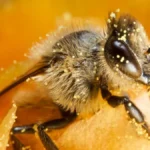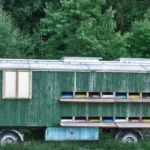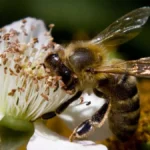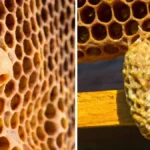How long does it take bees to make a hive? This is a very difficult question to answer, so I will try to do so in this article. Bees are complex animals hence the answer is naturally complex as well.
As an experienced beekeeper, I often have people ask me this question. Let us use a human example to answer this question. How long does it take humans to build a city? Well if we look at London, it is nearly 2000 years old, so we could say it takes humans 2000 years to build a city. However, if we look at Dubai, it is about 190 years old, with most of the development that happened there occurring after 1980. There are huge cities in China that have been built in 10 years or less.
The success and growth of a human city depend really on the quality of the humans (education, skills, motivation, political/organization capacity, access to capital) and the quality of the resources available to fuel that city (natural resources, intellectual resources, markets, tourism, etc). Hence when we ask “how long does it take to build a city” we cannot answer that with a single answer. This is much the same for “How long does it take bees to make a hive?”
How Long Does It Take Bees To Make A Hive?
There are a number of factors that we must consider to answer this question.
Read more about: Do Wasps Produce Honey? A Story With A Sting In The Tail!
Number of Bees and Queen Quality
If a swarm starts building a hive and it has a large workforce it has more ability to build a hive rapidly. If there are resources available (nectar, pollen, sugar) and a hive has a large workforce, it can very rapidly build comb and become established. A good queen tends to be part of a good swarm. If she can lay a lot of healthy eggs every day, she will be able to produce a big brood nest. A small, mangy queen will produce a weak hive.

Honey Flow or Sugar Source
In a strong honey flow, a hive has abundant energy to build the combs and infrastructure. Hence a hive that is able to access nectar and energy grows fast. If it is a big swarm, that has access to resources, the growth rate is very rapid. If we provide the bees with sugar this helps them grow as well.
Pollen
Bees require pollen, or pollen substitute feed, to have the nutrients needed to build wax and to rear the brood. Hence if you have a strong nectar flow, combined with a strong pollen flow, your bees can build a large brood nest and this in turn produces many more baby bees.
Hive Position and Temperature
A beehive that is in a cold area will take longer to field its workforce. A beehive positioned in an area where conditions are warm in the morning, relatively cool at midday, and warm in the evening will work for longer periods of time and do a bit better.
Beehive Quality
A well-constructed beehive will allow the hive to grow faster. This is much the same as a well-planned human city will allow it to grow faster. A well-made wood hive box such as this will give the bees a head start. Hives that are poorly constructed have gaps in them that will let drafts of air, wasps, ants, and hive beetles into the hive.

Drawing All Of The Above Together – How Long Does It Take Bees To Make A Hive Under Optimal Conditions?
Under optimal conditions, comprising a large swarm, abundant resources (nectar, pollen), a good queen, a good hive, and a good location, the bees can build a hive in a very short amount of time. It can take a strong swarm a few weeks to draw the frames in two brood boxes, and for the queen to build a brood nest of about 15 frames or so. Depending on the race of bees, there are different numbers of bees per brood frame, but the workforce that emerges per frame of bees that hatches is about 3500 for European bees and 4500 or more for African bees (they are smaller).
As the new workforce emerges the hive will become increasingly strong and it is time to add more space for the bees.
I have seen hives under optimal conditions move into an empty hive box, and draw all of the combs, and the combs in a second brood box in 6 weeks. This is during a very strong honey flow with a very strong nutritious pollen flow. So this would probably be the best-case scenario. But under moderately good conditions I would work on 8-9 weeks with feeding to get the bees into two deep boxes if we started with a 3-4 pound swarm. This is assuming a very good-quality queen.
How Long Does It Take For Bees To Make Honeycomb?
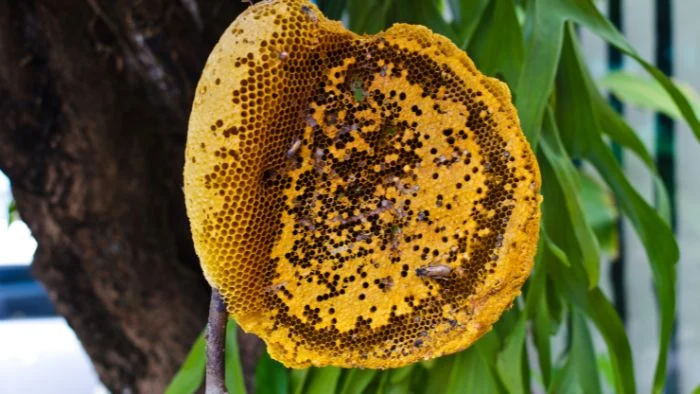
After a hive has built up its workforce and produced a brood nest, the bees will begin, if nectar is available, to make honeycomb. This is their backup energy store and they will start to pack honey away as the hive population increases during a nectar flow.
Bees in optimal conditions can make a few pounds per day of honeycomb – this is a large double brood box hive, in a perfect nectar flow. Under less optimal conditions, bees can take weeks or months to produce 10-20 pounds of honey. Under sub-optimal conditions, they will produce a few pounds of honey in a year or none at all.
How Big Can A Beehive Get?
There are a number of factors affecting the size of a hive. The hive has an upper limit on size determined by a queen – European queen bees can lay 2000 to maybe 3000 eggs a day. African queens can lay up to 4000 eggs a day. Bees wear out the further they fly, so if you have an African beehive that is close to a nectar source, the beehive can get up to about 60 000 to 70 000 bees in a hive, with European bees topping out at about 60 000 bees. If however, you have two queens in a hive, you can easily double that number for either group. Hives that have very large numbers of bees tend to be a bit of a nuisance to work, however, and trying to produce the “world’s biggest” beehive is more of an ego exercise that an exercise in practicality.
I once removed a wild hive in a garden shed and it spanned nearly 6 feet down the wall and covered an area four to five feet deep and about 7 feet long. This hive had multiple queens – I think three hives grew together into one hive, and then somehow kept that dynamic going. The hive had three brood nests, and there was honey between each brood nest. I removed around 200 lb of honey and about half that mass in the brood comb. The hive was a monster.
So How Long Does It Take Bees To Make A Hive?
You can see from the above that there is no real correct answer. However, if you understand the factors that make a hive grow fast, as a beekeeper you can control these and make your hives grow fast. Much like the Federal Reserve introducing liquidity into the economy (printing money and giving it to people to invest) a beekeeper can stimulate a hive by “printing honey” (giving the bees sugar and pollen) and this stimulates the bees to increase their workforce, build infrastructure and grow stronger. Hence a beekeeper acts a bit like a reserve bank governor, planning the economic growth of a hive to coincide with honey flows. If you know that a grove of nectar-producing trees will bloom in three weeks’ time, you can improve the size of the workforce in the hive so that they can take advantage of this – more bees =. more honey from a honey flow.
I hope this has helped you see the answer to the question “how long does it take bees to make a hive?” is that if you are a good beekeeper, you can increase the speed with which bees do this, and increase the size of the honey crop you will harvest. So the answer to the question is really you, dear beekeeper, you are the answer to the question! I challenge you to go out there and find out how fast you can get your precious bees out into the environment working their magic for all of us.

Dr. Garth A. Cambray is a Canadian/South African entrepreneur and beekeeper with 28 years of experience in apiculture and specializes in adding value to honey. His Ph.D. research developed a new advanced continuous fermentation method for making mead that has resulted in a number of companies globally being able to access markets for mead. His company, Makana Meadery, exports honey mead to the USA where it is available to discerning connoisseurs. He has also developed technologies to commercially manufacture organic honey vinegar in Zambia for export globally. He holds a few patents globally in the ethanol industry and believes in technology and knowledge transfer for human development and environmental sustainability. One of his proudest achievements is the fact that the wind farm he started at one of his old apiary sites has essentially made his hometown carbon neutral.

